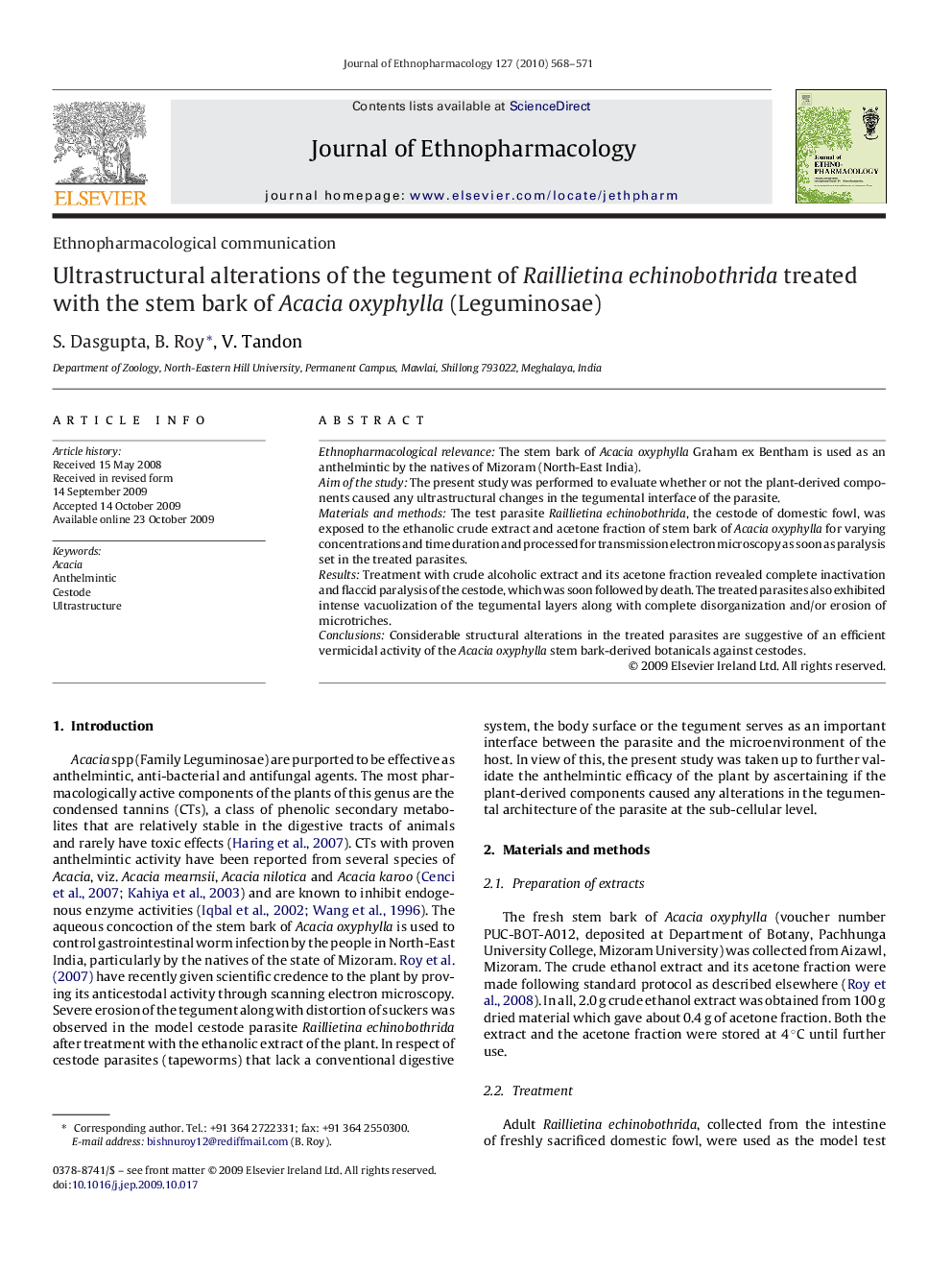| Article ID | Journal | Published Year | Pages | File Type |
|---|---|---|---|---|
| 2545934 | Journal of Ethnopharmacology | 2010 | 4 Pages |
Ethnopharmacological relevanceThe stem bark of Acacia oxyphylla Graham ex Bentham is used as an anthelmintic by the natives of Mizoram (North-East India).Aim of the studyThe present study was performed to evaluate whether or not the plant-derived components caused any ultrastructural changes in the tegumental interface of the parasite.Materials and methodsThe test parasite Raillietina echinobothrida, the cestode of domestic fowl, was exposed to the ethanolic crude extract and acetone fraction of stem bark of Acacia oxyphylla for varying concentrations and time duration and processed for transmission electron microscopy as soon as paralysis set in the treated parasites.ResultsTreatment with crude alcoholic extract and its acetone fraction revealed complete inactivation and flaccid paralysis of the cestode, which was soon followed by death. The treated parasites also exhibited intense vacuolization of the tegumental layers along with complete disorganization and/or erosion of microtriches.ConclusionsConsiderable structural alterations in the treated parasites are suggestive of an efficient vermicidal activity of the Acacia oxyphylla stem bark-derived botanicals against cestodes.
